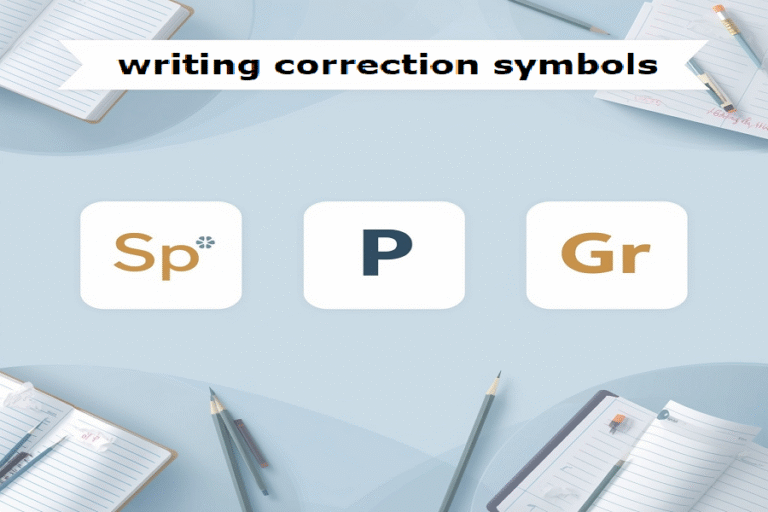
One of the biggest frustrations for Business English teachers is watching students who can ace grammar exercises but stumble when using those same structures in real conversations.
They know the rules. They can correct others. Yet, when it’s time to speak—especially in spontaneous business contexts like meetings or negotiations—the grammar vanishes.
If this sounds familiar, you’re not alone. The challenge lies not in teaching grammar itself, but in helping students bridge the gap between knowing grammar and using it accurately in speech.
This article is a guide to teaching business English grammar for speaking. In this article, we’ll explore why this happens and how you can guide your learners from theoretical understanding to confident, fluent application—especially when it comes to verb tenses in business communication.
1. Understand Why Business English Learners Struggle to Use Grammar When Speaking
Business English learners—especially those at intermediate or upper-intermediate levels—often have strong grammatical knowledge but limited ability to use it in real-time interaction.
This disconnect happens for several reasons:
- Cognitive overload: During conversation, learners focus on meaning, pronunciation, and vocabulary. Grammar becomes secondary.
- L1 interference: They often translate from their native language structures, which may not match English tenses.
- Lack of practice in spontaneous use: Classroom grammar practice is often limited to written exercises or controlled drills.
- Fear of mistakes: Many professionals prefer to avoid speaking rather than risk grammatical errors in front of colleagues or clients.
Understanding these barriers helps you design more purposeful and communicative grammar activities that target real performance, not just knowledge.
2. Shift the Focus: From “Learning Grammar” to “Using Grammar”
The first mindset change for teachers is moving from grammar accuracy as an end goal to communicative accuracy as part of fluency.
Here’s how you can reframe your teaching approach:
- Teach grammar in context. Introduce or review tenses using real-life business scenarios, such as project updates, reports, or client calls.
- Emphasize function over form. Instead of focusing on structure (“We use present perfect for past actions with present results”), show purpose (“We use it to report progress or results that affect now”).
- Model natural usage. Share authentic examples from emails, meetings, or business interviews where tenses are used meaningfully.
Example:
Instead of a worksheet on the present perfect, ask students to “give an update on their team’s progress this week” using that tense.
This way, grammar practice becomes a communication tool, not a grammatical performance.
3. Use Practical Activities to Turn Grammar into Conversation
Here are some classroom-proven ideas to help students transfer grammatical accuracy into fluent speech:
A. Timeline Talk
Focus tense contrasts (e.g., past simple vs. present perfect) using visual timelines.
- Give students a timeline with company milestones.
- Ask them to describe what the company did (past simple) and what it has achieved so far (present perfect).
- Encourage natural follow-up questions.
Tip: Visual aids make abstract tense distinctions concrete and memorable.
B. “Update the Client” Role-Plays
Simulate a short business meeting where learners must give a project update.
- Use the present perfect for current results: “We’ve completed three phases so far.”
- Use past simple for specific finished actions: “We delivered the report last Monday.”
- Include spontaneous Q&A to encourage real-time production.
C. The “Error Detective” Game
Play recordings of short dialogues with intentional tense mistakes.
- Learners must spot and correct errors in real time—just as they’d do in meetings.
- Then, replay the dialogues with corrections for reinforcement.
D. “Business Story Time”
Ask learners to tell short success or failure stories from work using a sequence of tenses.
Example prompt: “Tell us about a deal that almost failed but succeeded in the end.”
Encourage the use of past perfect, past simple, and present perfect naturally within the narrative.
E. Grammar Speed Chats
Pair learners for two-minute mini-conversations on rotating topics:
- “What have you achieved this month?”
- “How did you handle your last client complaint?”
- “What are you working on these days?”
Each question targets a tense without overt grammar explanation, promoting automatic retrieval of structures under time pressure.
4. Scaffold Grammar into Speaking Tasks
Many teachers jump too quickly from grammar exercises to free conversation, leaving students unprepared.
A more effective approach is a scaffolded transition, moving from controlled to freer use:
|
Stage |
Task Type |
Purpose |
|
1 |
Gap-fill or matching activity | Controlled grammar recall |
|
2 |
Sentence transformation | Structural reinforcement |
|
3 |
Information-gap or short dialogue | Semi-controlled practice |
|
4 |
Role-play or discussion | Free communicative production |
This sequence helps learners gradually internalize grammatical forms until they become automatic in speech.
5. Integrate Grammar Correction into Speaking Naturally
Correction shouldn’t interrupt fluency. Here’s how to make it productive:
- Recast errors subtly: Repeat what the student said, correctly.
- Learner: “He finish the report yesterday.”
- Teacher: “He finished the report yesterday? Great.”
- Use delayed feedback: After the activity, review common tense errors as a mini-lesson.
- Encourage peer correction: Have students note grammar slips during group tasks, then share feedback collaboratively.
These techniques maintain confidence and flow while reinforcing accuracy.
6. Connect Grammar to Business Functions
Link each grammar point to specific communicative goals in the business world:
|
Grammar Focus |
Business Use |
| Present simple | Describing company facts or routines |
| Present continuous | Discussing ongoing projects |
| Present perfect | Giving updates and reporting achievements |
| Past simple | Describing completed events or case studies |
| Future forms | Making predictions or plans |
| Conditionals | Negotiating or discussing options |
This helps learners see grammar as a functional communication skill, not a set of isolated rules.
7. Encourage Self-Monitoring and Reflection
Teach learners to self-assess their grammar use after speaking tasks.
Prompts like:
- “Which tenses did you use most often?”
- “Was your grammar accurate when explaining results?”
- “What mistakes did you notice yourself making?”
This builds awareness and long-term progress beyond classroom activities.
Final Thoughts
Teaching business English grammar for speaking isn’t about drilling rules—it’s about helping learners speak with clarity and credibility. When your students can use the right tense instinctively in meetings, presentations, and negotiations, grammar becomes a real professional asset.
By combining contextualized teaching, scaffolded practice, and reflective correction, you transform grammar from something to memorize into something to communicate with.
Remember:
In our journey of teaching business English grammar for speaking, the goal isn’t to achieve perfect grammar—it’s to enable effective and confident communication in real business situations.
Develop Your Business English Email Writing Skills
If you want to accelerate your success in writing professional emails and ensure you always have polished email phrasing at your fingertips, consider my Business English Email Toolkit.
It includes:
- Pre-written email templates covering common business scenarios
- Phrase bank sorted by purpose (requests, follow-ups, apologies, proposals)
- Real-world examples (see before/after makeovers)
Whether you’re emailing clients, colleagues, or job contacts, the toolkit helps you write more confidently and quickly.
Learn more about my Business English Email Toolkit from HERE.
Ask me if you’d like a sample!



